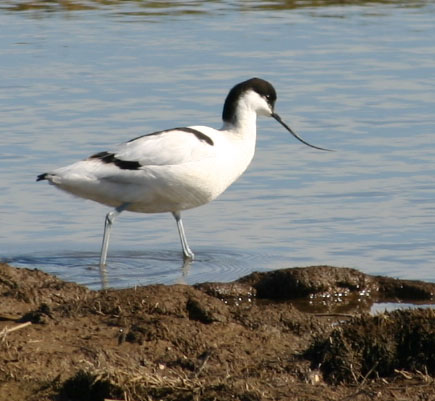A small group from the A Rocha friends in the North West met at Southport to enjoy the predicted high tide. As we arrived at the car park, a pair of oystercatchers soon let us know where they were and overhead skylarks were bursting their lungs announcing that spring was really here. In contrast to that lovely sound, the cacophony of black headed gull calls threatened to drown out everything else. We called in at the Sandgrounders hide for five minutes and noticed the blackthorn bushes coming into bloom.
Walking down the footpath we headed towards Nell's Hide where at the entrance one of our party noticed Ivy-leaved toadflax just coming into flower. Once in the hide we managed to see in the middle distance, pintail, wigeon, shoveler, several Canada geese, some mute swans and a couple of moorhens. Then closer to the hide several more pintail were roosting on a small island. Then, in the mainly dead vegetation we were just able to see a snipe foraging in the mud. The camouflage effect of its plumage was amazing. It was then time to check how high the tide was getting. Unfortunately the persistent east wind was preventing the tide coming as high as the tables had promised. We scanned the marsh and found scores of pink footed geese with a few greylags as well. The sea was still a long way off making identification of the thousands of waders almost impossible so we decided to set off to go to the former sand plant area. Two robins were in their seasonable aggressive state and the skylarks and meadow pipits were singing and displaying in the slightly sheltered area close to the RSPB car park. Walking carefully round this area to the river side of it enabled us to see two reed buntings and a lone blackbird. Another member of our party stopped and asked us to use our telescopes to look at a branch sticking out of the mud some distance away. A merlin was using this as a vantage point so we stopped for a time to enjoy this small raptor. As we did its larger cousin, a peregrine, swiftly flew past.Beyond the merlin we could see the waders but with the exception of some curlews, still too far for reliable identification. We were also looking for short eared owls but this time success eluded us
. Back to Sandgrounders hide where another birder said he had seen a spoonbill. We noticed about 20 avocets, more wigeon, shovelers, black-tailed godwits, and coots. A large white bird in the distance tried to fool us for a while, but its black pointed bill and yellow feet confirmed it as a little egret rather than a spoonbill. It was nearly time for some of our party to head for home and one of them mentioned he had never seen a water rail. Mere Sands Wood was on their way home so I guided them to that Lancs Wildlife Trust reserve. On our way to reception a few tree sparrows were busy at the feeders along with chaffinches dunnocks and more robins. We made our way quickly into Lancaster Hide and within two minutes the water rail put in its appearance along with its entourage of more reed buntings and dunnocks. All the party left for home after a very enjoyable morning.



My problem is...I would mess up taking a picture of a concrete block...honestly. I do love viewing God's creation as captured through the camera of others and you have done that quite well. I have added myself to follow your blog. You are more than welcome to visit my blog and become a follower also.
ReplyDelete